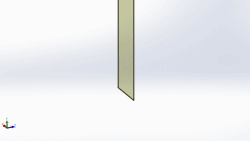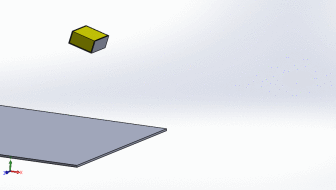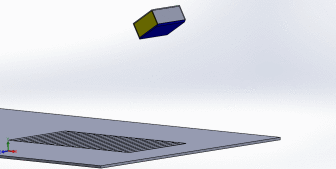Tipping from boxes
It's an apparently benign activity but the discharge from a box or bin tipped onto a moving conveyor gives a far from uniform feed.
It all depends on the box shape and the natural angle of repose* of the contents, which causes spreading of a poured pile beyond the feed
(*The angle you need to tip a surface before it flows).
If you tip from a full box onto a moving conveyor, the variation of feed rate during each tip becomes apparent:
initially, nothing comes out until you reach the angle of repose, and then with additional tipping you quickly get the first half of the box, with the rate then slowing as the bottom of the box becomes increasingly exposed, tailing away to nothing as the last remnants cling to the box's lower side wall.
One way round this is to profile the tipping action; slower to start, and much faster for the tailings.
Alternatively if you add a cover over the top of the box, and then invert it to match the material's angle of repose, withdrawing the cover at a uniform rate will give a nice steady feed:
So if you are loading a continuous process from boxed or binned feedstock, you should think carefully about thow you tip, and also about achieving optimum timing between tips, to give yourself the best chance of getting an even feed into your subsequent processes.

Modelling of the formation of a pile as a smooth feed falls onto a surface. Note the increasing amount of material spreading into conical flanks, which form at the material's natural angle of repose*.

The uneven discharge as a box is progressively tipped over
(Vertical scale is exaggerated)

The uniform discharge from a partialy inverted box as its cover is progressively withdrawn.
(Vertical scale is exaggerated)

